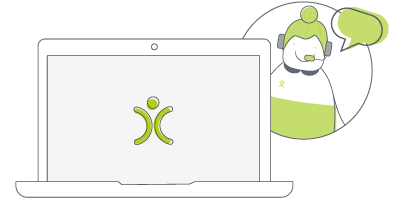Managing Communication (and everything else) between Remote and Office Based Workers
1 Jun 2020
This is the last blog in our series about helping businesses manage the transition of working from the office, then the home, and then back to the office again. So I’d like to talk about what happens when your workforce is split. Specifically the communication between your remote and office based workers.
There are a lot of reasons people may need to remain working from home, from healthcare to childcare. Studies have shown that, during lockdown women have been disproportionality affected by having to take on the additional childcare responsibilities. It is also looking likely that more women than men will need to stay working remotely during this gradual lifting of the lockdown.
As long as it is still viable in terms of business strategy, most companies and managers will continue to support these employees. But this doesn’t mean that there aren’t some logistical (and emotional) challenges they will need to overcome.
But people were working remotely before Covid-19…
It’s true.
Before the word “coronavirus” entered everyone’s daily vocabulary, one study even estimated that as many as half of all people would work remotely by 2020. However, the Office of National Statistics (ONS) found that, in 2019, only about a third of people surveyed were working from home…so that may have been a bit of an overestimation.
Or maybe not in this post-Covid world.
The Business Impact of Coronavirus Survey (BICS) found that, of the businesses who replied, approximately 48% of their workforce was working remotely.
Not far off 50%…but not “normal” circumstances either. And these abnormal circumstances just keep changing and at alarming speed.
Businesses who suddenly had to change gear to get their people working remotely are now feeling under pressure to get everyone back into the office. But as I mentioned above, it’s not possible for everyone to come back right away…so what happens now?
The answer: a workforce split between those able to come back into the office and those who need to continue working remotely.

Watch and learn
If you're looking for further information on how specific features and functionality play out in OpenCRM, why not click to check out our webinars?
watch nowWhat are the challenges of having a split workforce? And what can you do to address them?
Each company (and department even) will have unique challenges. But there are a handful of fairly universal issues that crop up when you’ve got a workforce that is split between remote workers and people based in a shared office.
The three challenges I’d like to discuss in this blog are:
- Communication
- Emotional burden
- Workload expectations
None of these are insurmountable, you can see this from the way other countries and companies are already managing a split workforce. But all will take some dedicated time and effort to manage.
Communication between Remote and Office Workers
As certain members of your team start making their way back to the office, they will be able to pick up their old methods of communication…you know, like actually talking to each other. But those individuals still working remotely can easily start to feel left out. Especially if those group video calls suddenly stop.
Keeping video calling and meetings going is certainly one thing you can do to keep your communication going strong. But you have to be careful…if there’s only one person on video and everyone else is in a room together, you may only be increasing the isolation that remote worker feels.
Picking the right tools
As Tom mentioned in his blog, there are technical tools that you can use to ensure communication lines between your remote and office based teams stay open. Using an instant messaging platform, even when people are in the same room together, has benefits beyond just ensuring your remote workers feel included.
The biggest benefit, at least in our experience, is that you have a written record of decisions made. And how you got to those decisions. This can be incredibly useful when going back months later to refresh your memory.
And the other benefit, in terms of communication between remote and office workers, is that EVERYONE is involved with the conversation. No one “looks” any different, so everyone can feel as much a part of the conversation as anyone else.
It reinforces that feeling of everyone being part of the same team…which leads me on to my next challenge.

Let us take you on a tour
You've had a look around and are starting to think OpenCRM might be the system for you and your business. Why not chat with one of our team (and ask your burning CRM questions) as they take you on a tour of the system?
find out moreAvoiding Negative Feelings on Both Sides
Seeing your colleagues all in a room together while on a video call, as opposed to just chatting, can also lead to increased feelings of isolation for your remote workers.
Feeling isolated is the second biggest struggle faced by remote workers, according to the State of Work 2019 Report. A whopping 19% percent of people surveyed reporting feeling lonely.
But that’s the remote workers…what about the people who were able to come back to the office?
To start with, you will certainly need to deal with and address people’s fears about being back in the office. After all 41% of US workers surveyed (in March) reporting that they were afraid to go back to work. Our MD wrote about how this in his last blog, so I don’t want to cover it here really.
The other negative feeling your office based workers might be feeling, however, that I do want to discuss is envy. One study undertaken in 2019 found that 83% of people would rather than a job that offered flexible workspace policies.
Some of those back in the office might be looking at those people are continuing work remotely and wishing that they were doing the same. Working from home during this pandemic isn’t the same as remote working during normal circumstances, but even so.
So how do you address isolation in remote workers and envy in those who came back to the office?
Communicate
The answer, in both cases, is all down to having proper communication about it.
Ensuring remote workers do not feel isolated is down to ensuring that they are included in the discussions that take place in the office. So they feel that their contribution is still valued. This means managers taking the time to seek out those people’s opinions. It also means talking to those people struggling with loneliness. Find out what they think will help them feel more included.
And the same goes for people wishing they were still working from home. Talk to them about why they feel that way. Work with them to find a solution that suits both them and your business. Having a solution that fits is key. Could they work from home on certain days of the week? Or even just a couple days a month?
This pandemic has opened the world’s eyes to the ability of people to work under difficult circumstances from their homes. Is it something your business could continue to do going forward?

GDPR: your data, your rules
We've always put data protection at the heart of OpenCRM. So with the introduction of GDPR, we've added new tools and features so you have the control you need to implement your policies and achieve compliance.
find out moreManaging Workload and Expectations
In the past, the main problems for remote workers (according to the statistics) had nothing to do with staying motivated and getting work done. Only 8% reported that staying motivated was their biggest challenge and another 10% saying getting distracted was. Other reports suggest that working from home can actually lead to a 13% performance increase (compared to working in the office).
But I think we can all agree that we’re not really facing normal circumstances right now.
The people who are continuing to work remotely may be facing much higher childcare responsibilities. Or they may be staying home due to fears about their and their family members’ health (shielding).
Either way those levels of motivation, distraction, and general productivity may be very different for your remote workers right now. And it wouldn’t be surprising if those people back in the office felt that picking up the slack wasn’t entirely fair.
So how do you manage the workload of those people working remotely? While also balancing the expectations of those back in the office?
This is a tricky one. And there isn’t a clear answer to it.
Transparency and Flexibility
Communication is going to play a huge role. But I think the biggest way to address this is down to a combination of transparency and flexibility.
If remote workers know what tasks they are expected to accomplish in a given day, but are given a bit more flexibility over WHEN they can do it, they will have a better chance of actually completing it. They can schedule their work around their other distractions. Some may prefer to take a little extra time in the morning or evening to ensure that it gets done.
For people in the office, being informed about who is picking up which tasks and communicating around when these are being completed can go a long way to addressing their concerns.
You may handle this through sharing Calendars so everyone can see what everyone is doing. Or maybe just relying on the general communication tools you’ve put in place.
But it’s a challenge you’ll need to face head on and have a plan in place of how best to manage it for you and your team.
Although I originally hail from northern California, as soon as I arrived in Yorkshire I knew it was the place for me! At OpenCRM, I started out in the Business Development team, and then moved into compliance and Q&A because I love telling people what to do…ok, that’s not the real reason, but it makes for a good bio one-liner. When I’m not in the office, you can usually find me tramping through the dales, crafting, gardening, or with my nose in a book.